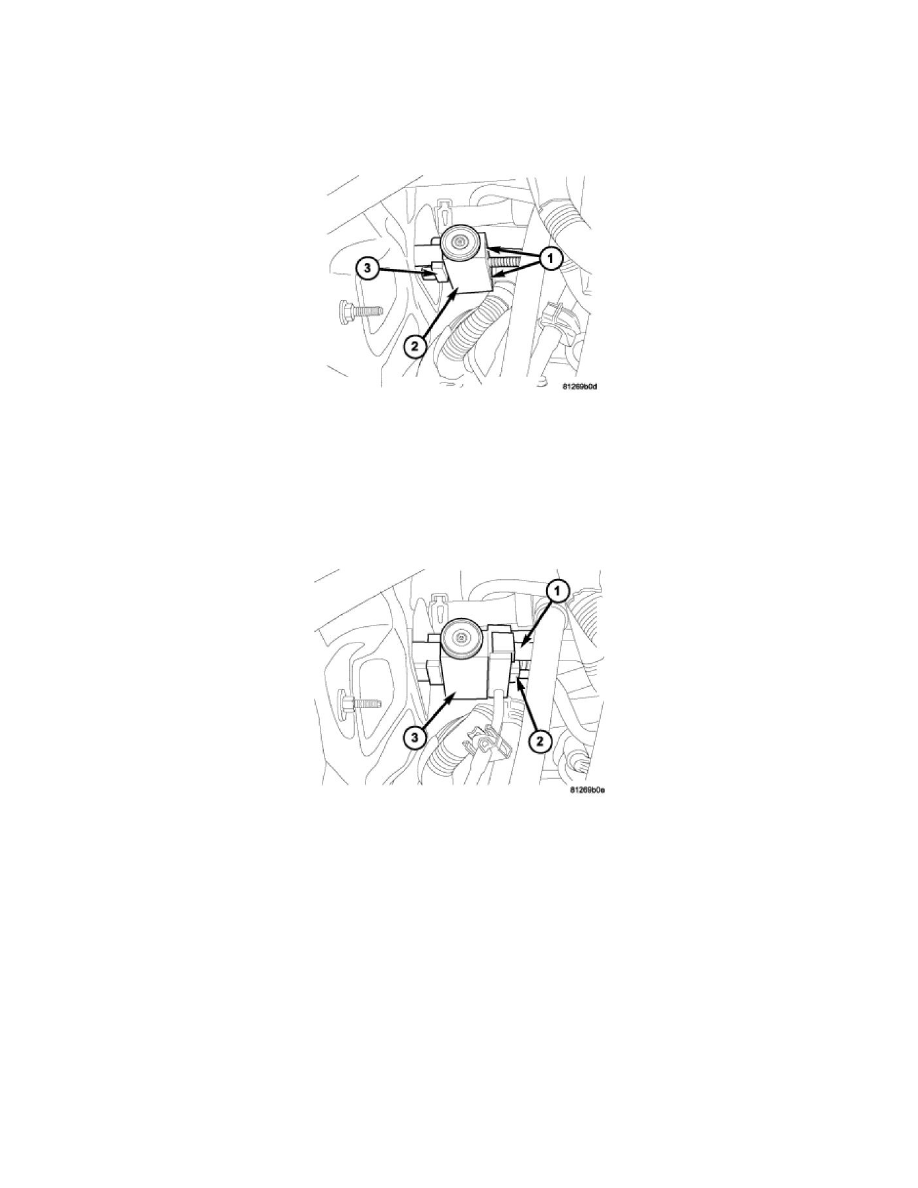Durango 4WD V8-4.7L VIN P Flex Fuel (2007)

oil level will prevent the A/C system from operating as designed and can cause serious A/C compressor damage.
NOTE: When replacing multiple A/C system components, refer to the Refrigerant Oil Capacities chart to determine how much oil should be added to
the refrigerant system.
NOTE: Replacement of the refrigerant line O-ring seals and gaskets is required anytime a refrigerant line is opened. Failure to replace the rubber O-ring
seals and metal gaskets could result in a refrigerant system leak.
1. Remove the tape or plugs from the evaporator tube fittings and all of the expansion valve ports.
2. Lubricate new rubber O-ring seals with clean refrigerant oil and install them on the evaporator tube fittings. Use only the specified O-rings as they
are made of a special material for the R-134a system. Use only refrigerant oil of the type recommended for the A/C compressor in the vehicle.
3. Install the A/C expansion valve (2) onto the evaporator tube tapping block (3).
4. Install the two bolts (1) that secure the A/C expansion valve to the evaporator tube tapping block. Tighten the bolts to 11 Nm (97 in. lbs.).
CAUTION: Use care when installing the A/C lines to the A/C expansion valve. Carefully align the tube ends with the valve prior to tightening
the A/C line retaining nut or damage to the sealing rings and tube ends may occur.
5. Install the A/C suction line (1) and the A/C liquid line (2) to the A/C expansion valve (3).
6. Install the right front wheelhouse splash shield.
7. Lower the vehicle.
8. Reconnect the negative battery cable.
9. Evacuate the refrigerant system.
10. Adjust the refrigerant oil level.
11. Charge the refrigerant system.
